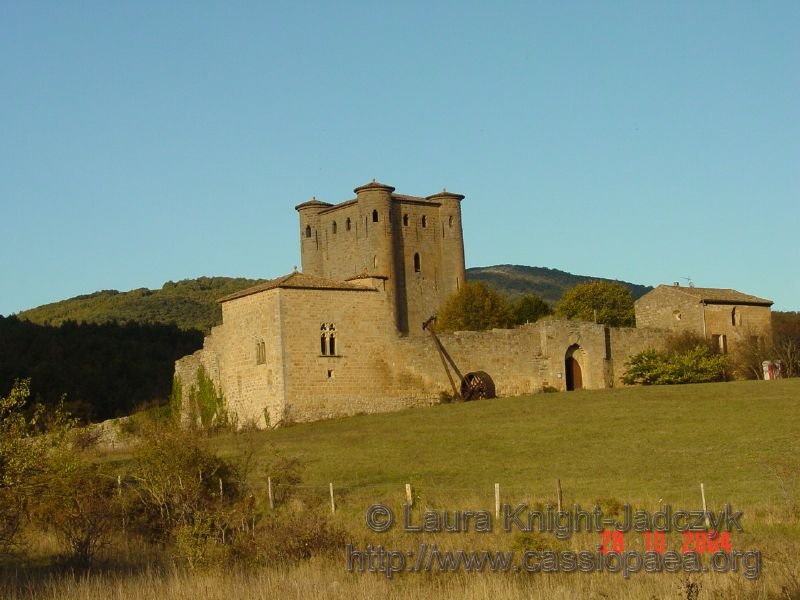|
In the early 11th century the castrum of Arques belonged to the Abbey of Lagrasse. At some time during the next hundred years it passed into the hands of the Seigneurs of Termes. The Crusaders passed this way in on their way from their successful siege of Termes to Coustaussa, Rhaeda (Rennes-le-Chateau), Le Bezu, and Puivert. After the Crusades against the Cathars, and the fall of Termes, Arques was given to one of Simon de Montfort's lieutenants, Pierre de Voisins. It was later reclaimed by Oliver de Termes in 1246 following his surrender to the French Crusaders, but then sold it back to Pierre de Voisins. Pierre's son, Gilles, rebuilt the village as a bastide in 1268 and also started work on the present castle. It was completed by his son Gilles II in 1316.The castle, generally known as a donjon (ie a keep, not a dungeon), rises 20 meters and exemplifies the castle builders art - providing a good lookout and defensive position with a luxurious top floor. Unusually for the area and period, it stands at the bottom of a vally rather than the top of a mountain. It has been, and still is being, sympathetically restored by the commune of Arques, to which it (or rather most of it) belongs.
|
![[First]](bw_first.gif)
![[Prev]](bw_prev.gif)
![[Index]](bw_index.gif)
![[Next]](bw_next.gif)
![[Last]](bw_last.gif)

![[First]](bw_first.gif)
![[Prev]](bw_prev.gif)
![[Index]](bw_index.gif)
![[Next]](bw_next.gif)
![[Last]](bw_last.gif)